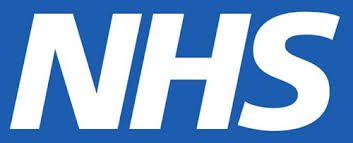BEAT HF is the first UK-wide disease awareness campaign for heart failure and is targeted at the public and primary care healthcare professionals.
Professor Clare Taylor, Nick Hartshorne-Evans, and Dr Dargoi Satchi developed BEAT to improve awareness of heart failure through early recognition of common symptoms. The acronym BEAT leads to testing using a commonly available blood test, NT-proBNP, to rule out heart failure.
BEAT stands for:
Breathlessness
Exhaustion
Ankle swelling
Time for a simple blood test or Time to speak to your GP Surgery, depending on the setting.
Nick Hartshorne-Evans, CEO and Founder of The Pumping Marvellous Foundation, behind the BEAT campaign explains how it works.
Tell us about the innovation. What does it do, how does it help, who does it help, and why is it important?
The public poorly understands heart failure. It is seen as a specialism and, therefore, has poor awareness in primary care; however, there are significant actions primary care can take to improve the time to diagnosis from symptom presentation to a simple blood test, which will improve patient outcomes across mortality, quality of life, and economic burden.
By using the BEAT acronym, primary care healthcare teams, including nurses and doctors, can, by using the patient’s medical history, assess whether it could be heart failure and, therefore, administer an NT proBNP blood test, which is a crucial element of the NICE guidelines.
How does it help?
Patients: Heart failure has debilitating symptoms. An efficient diagnosis leading to optimised treatment is essential, ensuring the patient has a platform to improve their life living with heart failure.
Primary care: Following the BEAT acronym, administering an appropriate NT-proBNP blood test as a rule-out tool may reduce the “revolving door” of inappropriately misdiagnosed patients. This may reduce the increasing burden of heart failure on primary care.
Hospitals: This reduces the possibility of open-access ECHO by ensuring an NT-proBNP is used to rule out heart failure first. Therefore, it reduces the burden on ECHO services and the wait times.
Who does it help?
It helps patients – we know that although people struggle with the terminology of being diagnosed with heart failure, earlier diagnosis may lead to the optimisation of treatments and care. By optimising treatments and care, the evidence points to a longer life chance, a better quality of life living with heart failure and a reduction in health touchpoints like unplanned hospital admissions.
It also helps primary and secondary care. It ensures that there is an easily understandable way to get symptomatic people a simple blood test with a defined referral pathway rather than people presenting at the hospital with crashing heart failure. Currently 80% of people are diagnosed in hospital with 40% of those presenting in primary care before the diagnosis.
Heart failure costs the NHS approximately £2 billion a year. Many of the costs are due to the late presentation of very sick patients. 80% of heart failure diagnoses are made in hospitals, yet approximately 40% of those had previously presented with symptoms in Primary Care.
Why is it important?
An efficient diagnosis leads to a better opportunity for the patient and their family to live better with heart failure. Better recognition of heart failure symptoms and what to do leads to a more efficient diagnosis and treatment outcomes. It can also mean reduced unplanned hospital admissions, fewer diagnosed with crashing undiagnosed decompensation in hospitals where outcomes are worse, and reduced inappropriate referral outcomes for ECHO.
Ultimately it can mean a reduction in mortality, and a reduced economic burden due to less unplanned hospital admissions and reduced bed occupancy and most importantly, a better quality of life for patients.
How are you working with the Health Innovation Network?
We have presented the BEAT HF awareness campaign and the Network has adopted it nationally in its heart failure work stream.
What are the plans/next steps for this innovation?
To improve traction, update and adoption across the Network, cardiac networks and wider NHS England adoption.
What’s your most significant piece of learning from innovating in the NHS?
Learning how to pace a project within the NHS, building a network of champions and having a no-conflict, non-threatening idea that builds value across the whole system and has obvious value to actors within the stakeholder environment. BEAT fits into this value-added framework, which requires minimal effort and re-enforces what we should do anyway.
What are your hopes for the future?
Due to the impending and somewhat overwhelming Heart Failure prevalence due to the CVD challenges, BEAT becomes a way for Patients, Primary Care and Specialists to identify a heart failure diagnosis earlier. With our sub-workstreams, we aim under the banner of BEAT HF to prove that we can work from BEAT to TREAT in less than 60 minutes. It is achievable, requires some glueing of processes we already know work and would benefit the NHS and, more importantly, patients who suffer from late diagnosis.
What’s the best part of your job?
I wake up every morning and never regret doing what I am doing. Like others, I am sure that sometimes waking up to the daily grind does not provoke happiness and fulfilment. I enjoy what I do. My mantra right from the “get go” has been to help people live better with heart failure; my drive and insights come from receiving a diagnosis of heart failure in 2010 and how this impacted me. By opening my eyes, I saw I was not unique. I started the Pumping Marvellous Foundation not only to help people with a diagnosis of heart failure but also because I see gaps in the market, and I love plugging them. We are achieving this.
In its most basic terms, if you find something you enjoy doing or something that makes you happy and fulfils your ambition, then this is the most valuable position to find yourself in, in my opinion. President Obama once said, “The cynics may be the loudest voices – but I promise you, they will accomplish the least.” I am all that. Never a doubter, always a believer.
What are your three pieces of advice for budding health innovators?
That’s a difficult question to leverage into three pieces.
- Always believe in yourself and your idea. Use your emotion to attract attention and use data to drive the narrative.
- Never Give Up – Be resilient; there will be many naysayers, pick your advocates and champions wisely.
- Think broad – Don’t silo yourself.
- Don’t die on somebody else’s hill – pick to win.

Grace Gimson is the founder and CEO of Holly Health, a digital platform dedicated to transforming healthcare through preventive and person-centered digital health coaching. The platform aims to support individuals struggling with mental or physical health. Grace is a generalist with a background in operations, business leadership, and scaling tech startups such as Deliveroo. [...]

HN (Health Navigator) is an AI-powered health innovation that enables preventative care through predictive analytics. Founded in Sweden by Dr Joachim Werr, a former A&E consultant, HN is now supporting healthcare systems across the UK to identify high-risk patients before they reach crisis point. Joachim shares the journey behind HN and the transformative impact of [...]

The government has set out three shifts it wants to see happen: treatment to prevention, hospital to community, analogue to digital. HealthTech has a crucial role in supporting the delivery of all three. But using technology to help deliver these changes requires procuring the technology, and when all the noise is about there being no [...]






